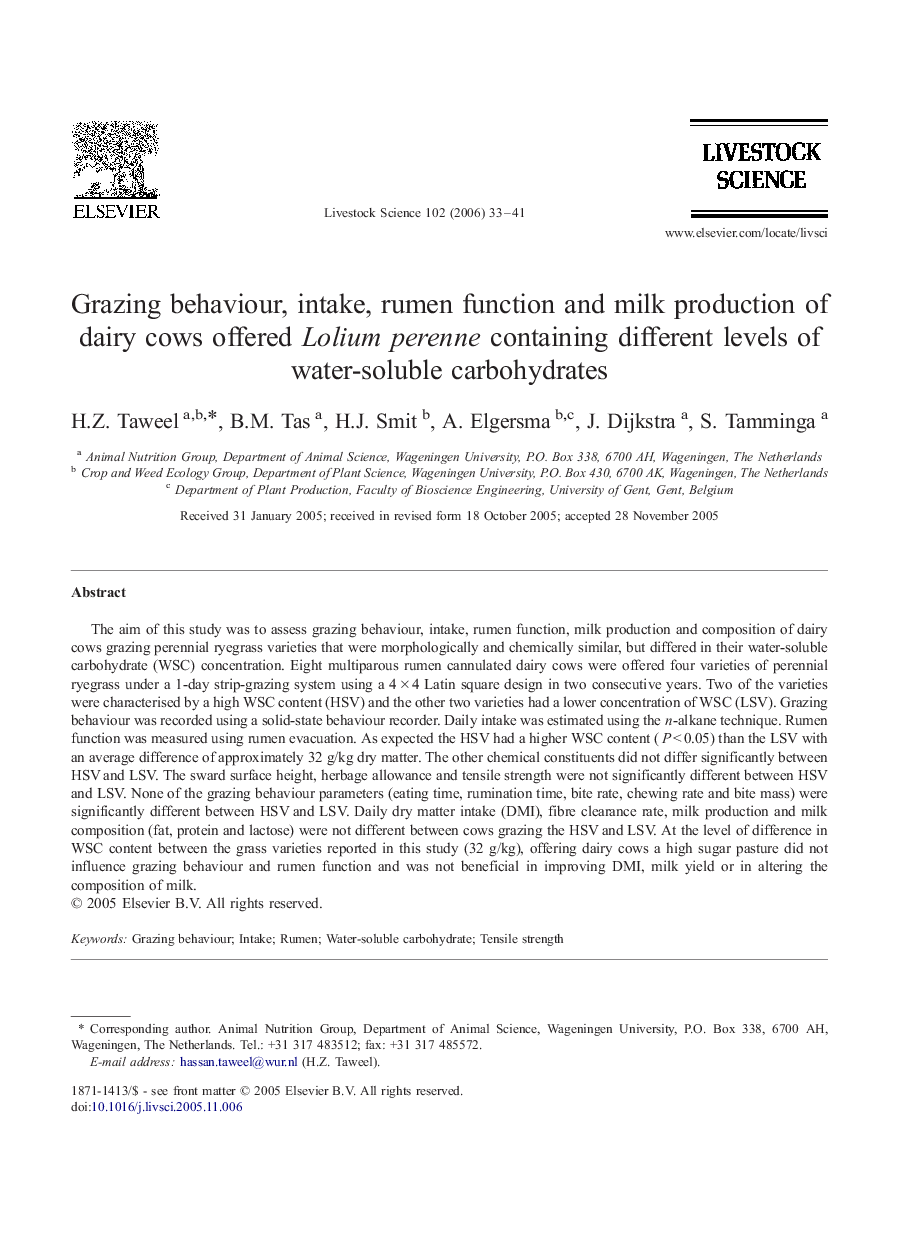| Article ID | Journal | Published Year | Pages | File Type |
|---|---|---|---|---|
| 2449072 | Livestock Science | 2006 | 9 Pages |
The aim of this study was to assess grazing behaviour, intake, rumen function, milk production and composition of dairy cows grazing perennial ryegrass varieties that were morphologically and chemically similar, but differed in their water-soluble carbohydrate (WSC) concentration. Eight multiparous rumen cannulated dairy cows were offered four varieties of perennial ryegrass under a 1-day strip-grazing system using a 4 × 4 Latin square design in two consecutive years. Two of the varieties were characterised by a high WSC content (HSV) and the other two varieties had a lower concentration of WSC (LSV). Grazing behaviour was recorded using a solid-state behaviour recorder. Daily intake was estimated using the n-alkane technique. Rumen function was measured using rumen evacuation. As expected the HSV had a higher WSC content (P < 0.05) than the LSV with an average difference of approximately 32 g/kg dry matter. The other chemical constituents did not differ significantly between HSV and LSV. The sward surface height, herbage allowance and tensile strength were not significantly different between HSV and LSV. None of the grazing behaviour parameters (eating time, rumination time, bite rate, chewing rate and bite mass) were significantly different between HSV and LSV. Daily dry matter intake (DMI), fibre clearance rate, milk production and milk composition (fat, protein and lactose) were not different between cows grazing the HSV and LSV. At the level of difference in WSC content between the grass varieties reported in this study (32 g/kg), offering dairy cows a high sugar pasture did not influence grazing behaviour and rumen function and was not beneficial in improving DMI, milk yield or in altering the composition of milk.
